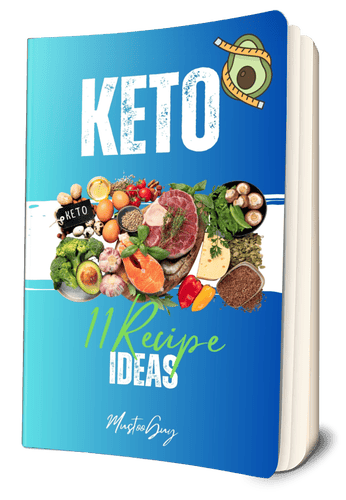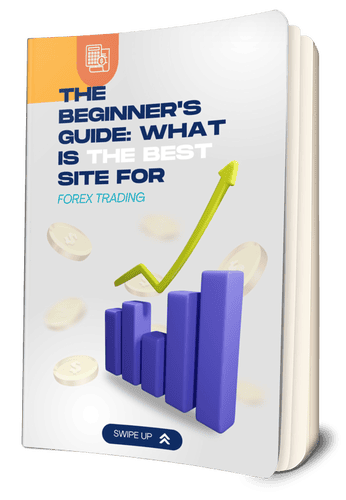Unlocking Sales Potential: Tips for Creating Compelling Short eBooks That Sell
Welcome to our blog! Today, we are going to explore the exciting world of selling digital products. With the rapid advancements in technology, more and more people are turning to the digital realm for their shopping needs. Whether you are an established business or an aspiring entrepreneur, selling digital products can be a lucrative venture.
One of the most popular digital products that people are selling these days are short ebooks that sell really well. With the rise of ebook readers and the increasing popularity of digital reading, this market is thriving. If you have a passion for writing and knowledge to share, writing ebooks can be a fantastic way to turn your expertise into a source of income.
But, where do you start? Finding ebook readers and connecting with your target audience may seem like a daunting task, but it doesn’t have to be. Thanks to various online platforms and marketing strategies, reaching potential readers has become easier than ever. In this blog, we will delve into the tips and tricks of ebook writing and explore effective ways of promoting your digital masterpiece.
So, sit back, grab a cup of coffee, and join us on this exciting journey of selling digital products, discovering ebook readers, and unleashing your inner author. Get ready to turn your passion into profit and make a splash in the world of digital entrepreneurship. Let’s dive in!
A- Design and Formatting Tips for High-Impact Short eBooks That Sell
When it comes to design and formatting, there are several software tools specifically created for eBook production. These tools provide a range of features to enhance the visual appeal and readability of your content. Some of the top software for short eBook design and formatting include Adobe InDesign, Scrivener, and Vellum. These user-friendly programs offer templates, formatting options, and customization features to create visually stunning eBooks.
1. Importance of Visual Appeal in Short eBooks that Sell
Principle 1: Visual Appeal
Description: Importance of creating an attractive cover and layout.

Visual appeal plays a crucial role in capturing the interest of potential readers. When it comes to creating short ebooks that sell, the importance of an attractive cover and layout cannot be overstated. A visually appealing design can make your ebook stand out from the crowd and entice readers to pick it up, click on it, and ultimately purchase it.
The cover of your ebook is the first thing that grabs a reader’s attention. It should be eye-catching, professionally designed, and reflect the content and tone of your book. Investing in a high-quality cover design can make a world of difference in attracting potential buyers. Additionally, a well-designed layout enhances the reading experience by making the content easier to consume and navigate.
Some of the notable tools that can help create stunning graphics are Canva and Designrr!
Remember, your goal is not just to create a short ebooks that sells; it’s to create a book that people want to read. By prioritizing visual appeal and investing in tools for creating short ebooks that sell, you can make your book more enticing to readers and increase its chances of success in a competitive market. So, don’t underestimate the power of a visually appealing cover and layout – they could be the key to unlocking the success of your ebook.
Tips: Best Practices Design Elements
When it comes to design elements such as color schemes and typography, there are certain best practices that can greatly enhance the overall visual appeal and effectiveness of your work. Whether you’re designing a website, creating a logo, or formatting a document, paying attention to these details can make a big difference.
Firstly, choosing the right color scheme is crucial. Colors have a profound impact on the way we perceive things, and different colors evoke different emotions and reactions.
Consistency is key when it comes to color schemes, so it’s important to select colors that complement each other and create a harmonious visual experience. Additionally, keep in mind the context and purpose of your design.
For example, if you’re designing a website for a professional service, using neutral and muted colors can convey a sense of credibility and trustworthiness.
Secondly, typography plays a significant role in conveying your message effectively. The font you choose should align with the tone and purpose of your design. For example, if you’re working on a fun and playful project, using a whimsical font can add personality.
On the other hand, for professional and serious designs, opt for clean and simple fonts that are easy to read. Pay attention to font size, line spacing, and alignment as well, as these factors play a crucial role in readability.
In conclusion, paying attention to design elements such as color schemes and typography can greatly enhance the visual appeal and effectiveness of your work. By choosing a cohesive color scheme and selecting appropriate fonts, you can create a visually appealing design that effectively communicates your message.
Suggested Tools
If you’re in need of design software or freelance designers, look no further than the world of affiliate links. With these links, you can easily find and recommend top-notch design software or talented freelance designers to meet your specific needs. Not only will you be supporting a fellow creative in their venture, but you may also earn a commission for any purchases made through these links.
When it comes to design software, there are plenty of options available. Whether you’re a professional designer or just starting out, finding the right software is crucial to creating stunning visuals. By using affiliate links, you can recommend popular design software such as Adobe Creative Cloud, Canva, or Sketch. These tools offer a wide range of features and capabilities that will help you bring your design ideas to life.
Furthermore, if you have expertise in design or freelancing, consider creating short ebooks that sell. These ebooks can serve as valuable resources for aspiring designers or freelancers, providing insights, tips, and tricks. By promoting these ebooks through affiliate links, you can offer others the opportunity to learn and improve while earning a commission in the process.
In conclusion, affiliate links can be a win-win for both the recommender and the recommended. Whether you’re in need of design software or freelance designers, or if you have valuable knowledge to share through ebooks, using affiliate links provides an opportunity to support fellow creatives and earn passive income. So why not take advantage of these links and help others succeed while boosting your own bank account?
Principle 2: Readability
Description: Ensuring text is easy to read and aesthetically pleasing.
In the fast-paced digital age, capturing readers’ attention is more challenging than ever. With so much content vying for their time and attention, it’s crucial to make your writing easily readable. Principle 2: Readability, focuses on aligning the aesthetics of your text with its intended audience.
To improve readability, it’s important to consider factors such as font style, size, and spacing. Avoid using complex or overly decorative fonts that may strain the reader’s eyes or make the text difficult to comprehend.
Opt for clean, concise fonts that are easy on the eyes. Additionally, choosing an appropriate font size and line spacing ensures that readers can comfortably navigate through the text without feeling overwhelmed or fatigued.
When it comes to long-form content, such as ebooks, readability becomes even more significant. To maximize the chances of success, consider breaking up lengthy paragraphs into shorter ones. Utilize bullet points, subheadings, and numbered lists wherever applicable to create visually appealing and easily digestible content. This not only improves reading comprehension but also makes the overall reading experience more enjoyable.
Short ebooks that sell are often those that prioritize readability. By focusing on making the text aesthetically pleasing, with clear headings, subheadings, and an organized format, readers are more likely to engage with and retain the information. Remember, the goal is not only to capture the reader’s attention but also to keep them hooked from start to finish.
Tips: Fonts & Image Optimization For Short Ebooks That Sell
When it comes to creating an ebook that sells, font choices, text size, and spacing play a crucial role in enhancing readability and attracting readers. Choosing the right font is essential for creating a professional and cohesive look for your ebook.
Avoid fonts that are overly decorative or hard to read, as they can distract readers from focusing on your content. Instead, opt for clean and simple fonts like Arial or Times New Roman, which are widely accepted and easy on the eyes.
In addition to font selection, text size is another important factor to consider. While it may be tempting to use a small font size to fit more content on a page, this can strain readers’ eyes and potentially discourage them from reading further.
Aim for a font size that is large enough to be easily readable, typically between 11 and 13 points. However, keep in mind that certain font styles may require slightly larger sizes for optimal legibility.
Spacing, both between lines and within paragraphs, can significantly affect the readability of your ebook. Adequate spacing allows readers to navigate through your content effortlessly. Consider using line spacing of at least 1.5 or double spacing to give your text some breathing room.
Additionally, pay attention to paragraph spacing by indenting the first line or adding a space between paragraphs. This ensures a clear visual separation between ideas and makes your ebook more inviting to read.
By implementing these tips for font choices, text size, and spacing, you can enhance the readability and visual appeal of your ebook.
Readers are more likely to engage with well-designed and easy-to-read content, especially in the case of short ebooks that sell. So, take the time to consider these elements and create an enjoyable reading experience for your audience.
Suggested Tools
Affiliate marketing has become an increasingly popular way for bloggers and content creators to monetize their websites. One key aspect of successful affiliate marketing is the use of affiliate links, which allow bloggers to earn a commission when their readers make a purchase through the provided link. However, formatting these links can be a time-consuming task. Thankfully, there are several tools and services available that can simplify the process.
Consider an efective tool called ShortPixel a very smart tool, not your average image optimization service. Reduce the image quality from 80% to 40% like others do. The result is images that are either under-optimized or over-optimized.
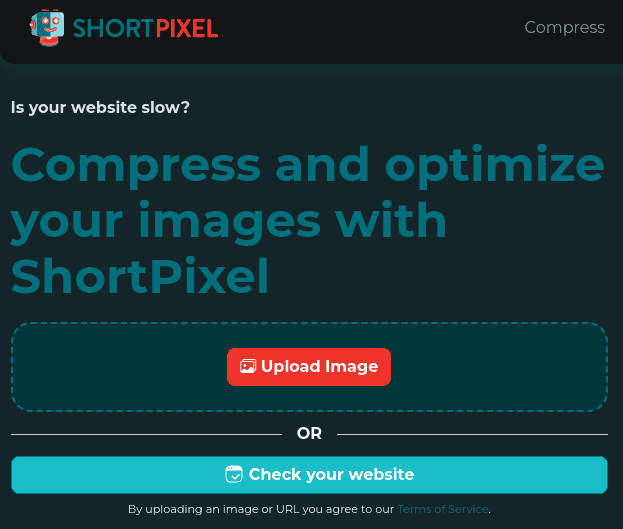
ShortPixel takes a totally different approach to achieve that, they take each image and optimize it multiple times with our proprietary algorithms until we have the perfect, smallest possible image.
Another recommended tool is ThirstyAffiliates. This plugin provides a user-friendly interface that makes it simple to manage and cloak your affiliate links. ThirstyAffiliates also offers advanced features such as automatic keyword linking, geolocation targeting, and link categorization.
By using this service, you can take full control over your affiliate links and enhance the user experience on your website.
For those who prefer an all-in-one solution, E-junkie is a popular choice. This service not only formats your affiliate links but also provides a comprehensive platform for selling digital products.
If you create short ebooks that sell, E-junkie can handle the entire purchase process, including payment processing and delivery. Their integration with popular payment gateways and email marketing services makes it easy to automate your sales process and focus on creating valuable content.
In conclusion, formatting affiliate links is an essential task for bloggers and content creators looking to monetize their websites. By using tools and services such as Pretty Links, ThirstyAffiliates, and E-junkie, you can streamline this process and optimize your affiliate marketing strategy.
So, if you create short ebooks that sell or promote other products, consider incorporating these tools into your workflow to save time and increase your revenue.
Principle 3: Consistency
Description: Maintaining a consistent design throughout the eBook.
When it comes to creating short ebooks that sell, one principle that should never be overlooked is consistency. Consistency, in this context, refers to maintaining a consistent design throughout the entirety of the ebook.
From the cover to the layout, the choice of fonts to the formatting of content, a unified and cohesive design not only adds professionalism but also enhances the overall reading experience for the audience.
Consistency in design provides a sense of familiarity and helps establish a visual identity for the ebook. By using the same fonts, colors, and design elements throughout the ebook, readers will easily recognize and connect with the content.
This consistency also helps to establish credibility and trust, as it showcases that the author has invested time and effort in creating a well-crafted piece of work.
Moreover, consistency extends beyond just design elements. It also includes maintaining a consistent tone, voice, and writing style throughout the ebook. This ensures that the content flows seamlessly and keeps the readers engaged.
When inconsistencies arise, it can confuse readers and disrupt the reading experience, potentially leading to a loss of interest and disconnection from the material.
In conclusion, consistency plays a vital role in creating short ebooks that sell. By maintaining a consistent design, from cover to content, and ensuring a consistent tone and writing style throughout, authors can enhance the overall reading experience and establish credibility. So, the next time you embark on creating an ebook, remember the importance of consistency and the impact it can have on your audience.
Tips: Layout
When it comes to creating short ebooks that sell, it’s important to pay attention to the layout consistency, as well as the design of the header and footer. These elements not only make your ebook visually appealing, but also help to establish a sense of professionalism and credibility.
Layout consistency is crucial for a seamless reading experience. Ensure that the font, font size, and line spacing are consistent throughout the entire ebook. This creates a sense of cohesion and helps the readers focus on the content rather than being distracted by inconsistent formatting.
The design of the header and footer is another important aspect to consider. Your header should include the title of the ebook and your logo or brand name. This helps readers to easily identify your ebook and associate it with your brand.
The footer, on the other hand, can include important information such as copyright details, contact information, and links to your website or social media platforms.
Additionally, don’t underestimate the power of visuals. Including visually appealing graphics or images related to the content can enhance the reader’s experience and make your ebook more memorable. However, be mindful not to overcrowd the pages with too many visuals, as it may distract readers from the main message of your ebook.
In conclusion, maintaining layout consistency and paying attention to the design of the header and footer are crucial for creating short ebooks that sell. By doing so, you not only enhance the visual appeal of your ebook, but also establish a professional and credible image. So, make sure to take the time to carefully design these elements to create an impactful and successful ebook.
Suggested Tools
Creating a visually appealing eBook can be a daunting task, especially for those with limited design skills. Luckily, there are plenty of eBook templates and design resources available to help ease this burden. Awesome tools for layout and other designing options are Canva and Desingrr! and FlipHTML5.
4. Crafting Compelling Content for Short eBooks
Creating a short eBook can be a great way to showcase your expertise in a concise and easily digestible format. However, crafting compelling content for short eBooks that sell requires careful planning and execution.
When it comes to the creation process, there are several tips to keep in mind. First, focus on a specific topic or niche that you’re knowledgeable about.
Narrowing your focus allows you to provide in-depth information and stand out in a crowded market. Additionally, make sure to include appealing visuals, such as images, graphs, or infographics, to enhance the reading experience.
Finally, to maximize the success of your short eBooks that sell, you need to have effective strategies for selling it. Consider utilizing platforms such as Wix or WordPress if you want to go the route of self-hosting.
If you want to go 3rd party hosting, such as Etsy and Amazon (there are pros and cons) or other popular eBook marketplaces to reach a wider audience. Additionally, promoting your eBook through your website, blog, and social media channels can help drive traffic and increase sales.
Crafting compelling content for short eBooks requires attention to detail and a clear understanding of your target audience’s needs.
By implementing pricing strategies for short eBooks, following eBook creation tips, and employing the best strategies for selling short eBooks, you can ensure that your eBook stands out and attracts readers who are looking for valuable and concise information.
5. Leveraging Formatting: Boost Short eBooks That Sell Better
In today’s digital age, eBooks have become not only a popular form of entertainment but also a lucrative business opportunity. With the rise of self-publishing, anyone with a story to tell or knowledge to share can now release their own eBook and potentially make a profit.
However, with the increasing competition in the market, effective eBook marketing strategies are essential for authors to boost their sales and profits.
One technique that authors can leverage is formatting. Proper formatting can make a significant impact on the readability and overall appeal of an eBook.
By using appropriate font styles, sizes, and spacing, authors can enhance the reader’s experience and ensure they can easily navigate through the content.
Additionally, incorporating visual elements such as images, charts, and graphs can further engage the audience and make the eBook more visually appealing.
Another tip for boosting profits from short eBooks is to offer value-packed content. Readers are more likely to purchase an eBook if they believe it will provide them with valuable information or entertainment.
Authors should focus on creating high-quality content that addresses a specific need or solves a problem for the target audience. By delivering on these expectations, authors can increase the likelihood of positive reviews, recommendations, and repeat purchases, ultimately driving up their sales and profits.
Lastly, authors should take advantage of the various eBook distribution platforms available today. These platforms, such as Amazon Kindle Direct Publishing, allow authors to reach a wide audience and increase their visibility.
By optimizing their eBook listings with catchy titles, relevant keywords, and enticing book descriptions, authors can attract more potential readers and improve their chances of making sales.
In conclusion, successful eBook marketing relies on a combination of techniques, and leveraging formatting techniques can be highly effective in boosting sales and profits. Authors should focus on creating visually appealing eBooks that offer valuable content to their target audience.
Additionally, utilizing eBook distribution platforms can significantly increase an author’s visibility and ultimately lead to higher profits. By implementing these strategies, authors can maximize the potential of their eBooks and achieve success in the competitive digital market.
Tip: Proper Structure
Description: How to format chapters, headings, and subheadings.
When it comes to writing and selling ebooks online, one of the most important factors for success is having a proper structure. A well-organized ebook makes it easier for readers to navigate through the content and find the information they need. This not only improves the reader’s experience but also increases the chances of selling more copies.
The first step in creating a proper structure for your ebook is to format your chapters properly. Each chapter should be distinct and clearly labeled with a heading.
This helps the reader easily identify what each chapter is about and allows them to skip to specific sections if they choose to. Additionally, using related keywords in your chapter headings can also help improve the discoverability of your ebook online.
In addition to chapter headings, subheadings are also essential for a well-structured ebook. They break down the content into smaller, more manageable sections.
Subheadings make it easier for readers to scan through the ebook and find specific information quickly. By using related keywords in your subheadings, you can further optimize your ebook for search engines, increasing its visibility and attracting more potential readers.
To summarize, a proper structure is crucial for the success of your ebook. Formatting your chapters, headings, and subheadings not only enhances the reader experience but also improves the discoverability of your ebook online.
By incorporating related keywords into your headings, you can further optimize your ebook for search engines and attract more potential readers. So, make sure to pay attention to the structure when creating your short ebook strategies, and watch your sales soar.
Tip: Best Practices Logical Flow
When it comes to creating a logical flow in your writing, there are a few best practices to keep in mind. Whether you’re writing a blog post, an email, or even an ebook, having a clear and cohesive flow can make a world of difference in how your readers perceive and engage with your content. So, let’s dive into some of the top tips for creating a logical flow.
Firstly, it’s essential to have a solid understanding of your target audience and their needs. This will help you determine the best tools for creating short ebooks without overwhelming your readers.
By focusing on concise and relevant information, you can ensure that your ebook is both informative and engaging. Additionally, make sure to incorporate ebook marketing techniques to promote your work effectively.
Next, consider using a clear and organized structure for your content. This can be achieved by using headings, subheadings, bullet points, or numbered lists to break up your text into digestible chunks.
By doing so, you make it easier for readers to navigate through your content and find the information they’re looking for. A well-organized structure also contributes to a logical flow, as each section naturally leads into the next.
Finally, provide a guide to making money with short ebooks, offering practical and actionable advice. This could include tips on pricing, distribution platforms, and promotional strategies.
By providing your readers with valuable insights, you not only enhance their overall experience but also establish yourself as an expert in the field.
In conclusion, creating a logical flow in your writing is crucial for capturing and maintaining your readers’ attention. By understanding your audience, utilizing an organized structure, and offering valuable guidance, you can create content that is both enjoyable and beneficial.
So, take these tips and apply them to your writing, whether you’re working on blog posts, emails, or short ebooks.
Recommended Tools
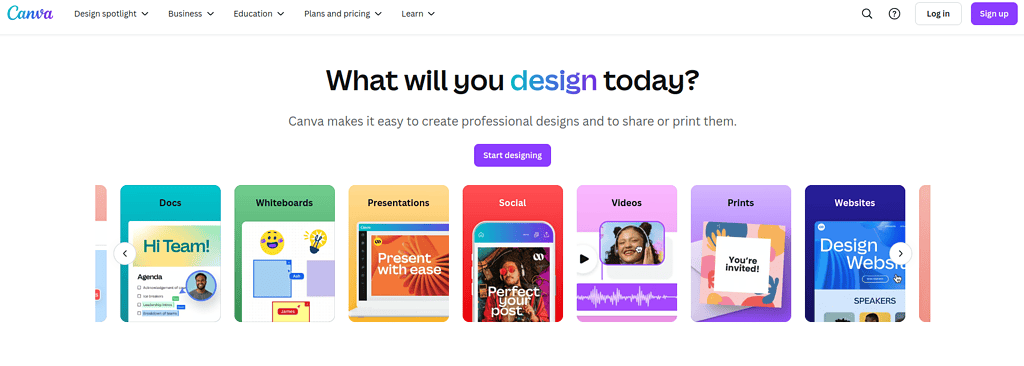
When it comes to creating short ebooks, it’s important to have the right tools at your disposal. These tools not only make the process much easier but also help boost your ebook profits. In this article, we will discuss some essential resources for short ebook creators and how to create profitable short ebooks.
One of the important elements of creating short ebooks is the formatting. A well-formatted ebook not only looks professional but also provides a better reading experience for your audience.
There are various formatting tools available that can assist you in this aspect. For instance, tools like Scrivener, Vellum, and Reedsy allow you to easily format and design your ebook, ensuring that it meets the standards of professional publishing.
Another important aspect of creating profitable short ebooks is understanding your target audience. By knowing who your readers are and what they are looking for, you can create content that resonates with them and increases the chances of generating more sales.
Market research tools like Google Analytics, SEMrush, and Ahrefs can provide valuable insights into reader demographics, search trends, and keywords that will help you cater to your target audience.
Lastly, affiliate links can be a great way to boost your ebook profits. By including affiliate links in your short ebooks, you can earn a commission for every sale made through those links.
Affiliate networks like Amazon Associates, ClickBank, and ShareASale offer a wide range of products that you can promote in your ebooks, ensuring a steady income stream.
In conclusion, having the right tools and resources is essential for creating profitable short ebooks. By properly formatting your ebook, understanding your target audience, and leveraging affiliate links, you can maximize your ebook profits.
So, take advantage of these resources and start creating successful short ebooks today.
Tip: Interactive Elements
Description: Adding hyperlinks, clickable tables of contents.
In the world of digital publishing, short ebooks have become a popular tool for sharing knowledge and expanding one’s reach. But how can you make your short ebooks stand out and boost your profits?
One effective strategy is to incorporate interactive elements into your content. In this article, we will explore the power of interactive elements and discuss some ideas for incorporating them into your short ebook content.
One way to make your short ebook more engaging is by adding hyperlinks throughout the text. Hyperlinks allow readers to navigate directly to additional resources or related content on the web. For example, if you mention a specific study or statistic in your ebook, you can link it to the original source or an in-depth analysis.
This not only adds credibility to your content but also provides readers with a chance to delve deeper into the topic, increasing their overall satisfaction and potential for repeat purchases.
Another interactive element that can enhance the user experience is a clickable table of contents. Rather than scrolling through page after page, readers can simply click on the chapter or section they are interested in, allowing for quick navigation and easy reference.
This feature is particularly useful for nonfiction ebooks that contain informative or instructional content. By providing a clear and easily accessible table of contents, you make it more likely that readers will stay engaged and find value in your ebook.
To maximize the impact of interactive elements, consider incorporating strong secondary keywords throughout your short ebook content. This will not only improve search engine optimization (SEO) but also make it easier for readers to locate specific information within your ebook.
Check out this tool used for SEO 5 Star** ratings!
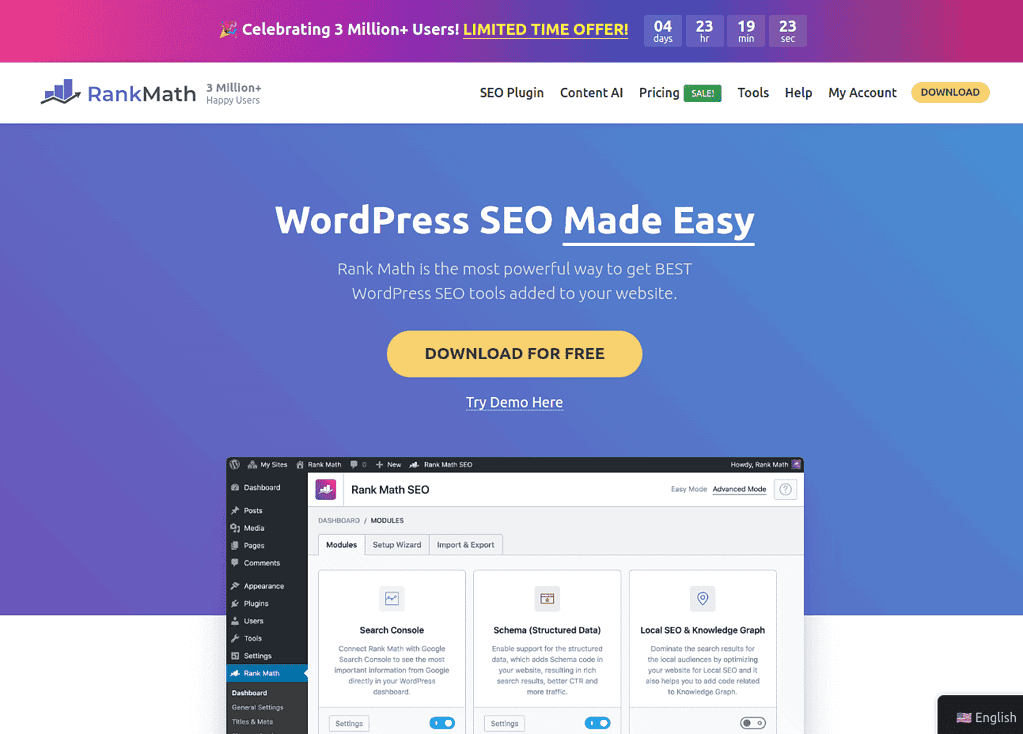
By strategically placing keywords alongside hyperlinks or in the table of contents, you can make your content more discoverable and increase the chances of potential customers finding and purchasing your ebook.
In conclusion, incorporating interactive elements into your short ebooks is a great way to boost profits and engage your readers.
The use of hyperlinks and clickable tables of contents allows for an enhanced user experience, making it easier for readers to navigate your content and explore related resources.
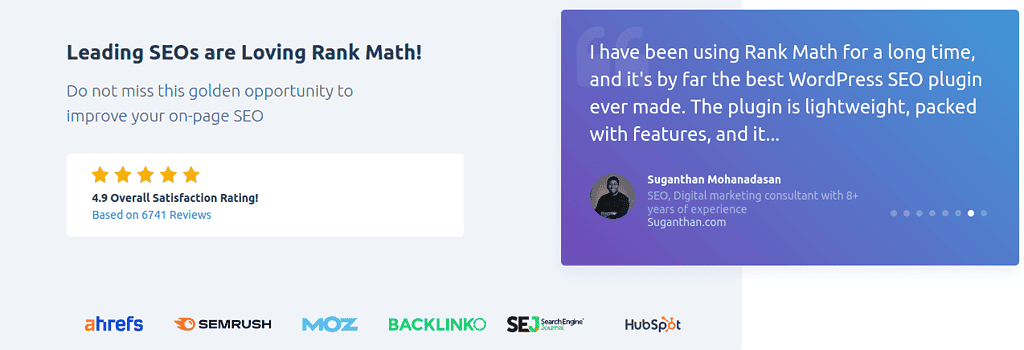
Additionally, utilizing secondary keywords strategically can improve SEO and increase the discoverability of your ebook. By implementing these tips for boosting profits from short ebooks, you can create a more immersive and valuable reading experience for your audience.
Tip: Interactive Features
Are you looking to spice up your blog or website with some interactive features? If so, you’ve come to the right place! In this article, we will provide you with some tips on how to implement interactive elements that will engage your readers and enhance their overall experience.
Firstly, consider incorporating short ebook content ideas into your website. Short ebooks are a fantastic way to provide valuable information in a concise and visually appealing format.
Whether it’s a how-to guide, a collection of tips and tricks, or a compilation of expert advice, short ebooks can captivate your audience’s attention and keep them coming back for more. Make sure to choose topics that are relevant to your niche and offer real value to your readers.
To create and sell short ebooks efficiently, consider using tools specifically designed for this purpose. There are numerous platforms available that offer features like easy content creation, customizable designs, and built-in sales funnels.
These tools can streamline the process and allow you to focus on creating high-quality content. Some popular options include Canva, Designrr, and Beacon.
Lastly, don’t forget about the importance of short ebook design tips. A visually appealing layout can significantly impact the reader’s engagement and overall perception of your content.
Use eye-catching graphics, infographics, and images that complement the text. Break up the content into sections with clear headings to make it easier to navigate. Consider adding interactive elements like clickable links, quizzes, and surveys to make the reading experience more dynamic and interactive.
In conclusion, implementing interactive features such as short ebooks can elevate your blog or website to the next level. By offering valuable content in a visually appealing and interactive format, you can capture your audience’s attention and keep them hooked.
Remember to choose relevant topics, utilize efficient tools for content creation and sales, and pay attention to design tips that enhance the overall user experience. Happy implementing!
Suggested Tools
When it comes to writing and publishing short ebooks, having the right tools is essential. These tools not only help in creating and formatting the content but also play a crucial role in effectively selling the ebooks.
If you’re an author or publisher looking for must-have tools for writing and publishing short ebooks, then look no further.
One of the primary keywords in the world of short ebook creation and sales is efficiency. To create captivating and interactive ebooks efficiently, consider using tools like Designrr. With Designrr, you can convert your content into beautiful ebooks with just a few clicks.
It allows you to add interactive elements such as videos, audios, and hyperlinks, making your ebook engaging and appealing.
Another tool worth considering is Beacon. This tool specializes in transforming blog posts, PDFs, and articles into stunning ebooks. Beacon simplifies the process of creating and publishing short ebooks and offers a wide range of customizable templates.
By using Beacon, you can effortlessly add interactive elements, charts, and graphs to make your ebook visually attractive and informative.
To take your short ebook creation to the next level, look into tools like Flipbuilder. This platform enables you to convert your content into realistic flipbooks, which mimic the experience of flipping through a physical book.
Flipbooks offer an immersive reading experience and allow you to incorporate interactive elements like pop-up notes, quizzes, and 3D effects.
In conclusion, when it comes to writing and publishing short ebooks, the right tools can make all the difference.
Consider using Designrr, Beacon, and Flipbuilder to efficiently create and sell your ebooks while adding interactive elements to enhance the reader’s experience. These tools are the go-to for anyone looking to take their short ebook creation and sales game to the next level.
Tip: Mobile Optimization
Mobile Optimization is a crucial aspect for any online business. With the increasing use of smartphones and tablets, it’s important to ensure that your website and content are optimized to provide a seamless experience to mobile users.
In the world of ebook creation and sales, mobile optimization plays a significant role in attracting and retaining customers.
One of the tools for efficient short ebook creation and sales is to design a mobile-responsive website. This means that your website automatically adjusts its layout and content to fit the screen size of the device being used.
By doing so, you provide a user-friendly interface for customers visiting your site from their mobile devices, enhancing their browsing and purchasing experience.
Furthermore, mobile optimization can significantly boost ebook profits by enabling a better user experience. When ebooks are easily readable on any device, customers are more likely to purchase and spend more time engaging with the content.
This ultimately leads to higher conversion rates and increased profits.
To sell ebooks online, it’s essential to ensure that your sales pages, checkout processes, and download pages are all optimized for mobile devices. This involves simplifying the design, minimizing load times, and ensuring smooth navigation.
By making your ebook sales process mobile-friendly, you not only provide a convenient experience for your customers but also increase the chances of making sales.
In conclusion, mobile optimization is a vital factor in maximizing the success of your ebook business. By investing in tools and strategies that make your content and sales processes mobile-friendly, you can attract more customers.
Don’t overlook the power of mobile optimization in reaching a wider audience and generating higher revenue in the ever-growing digital era.
Best Practices: Mobile Optimization
Mobile devices have become an essential platform for browsing the internet. With the majority of internet users use mobile devices, it’s crucial for content creators to optimize their websites for mobile devices. This not only ensures a seamless experience for users but also improves search engine rankings.
One of the key practices for mobile-friendly formatting is to create responsive design. This means that your website should adapt and adjust its layout based on the user’s screen size and orientation.
By doing so, you provide an optimal viewing experience, regardless of whether the user is on a small smartphone or a large tablet.
Another important aspect to consider is the use of long-tail keywords. These are specific keyword phrases that are more targeted and have lower competition. With mobile users often searching for quick answers, it’s essential to optimize your content with relevant long-tail keywords. This will help your website rank higher in mobile searches and attract the right audience.
In terms of formatting, it’s important to keep your content concise and scannable. Mobile users have limited screen space and shorter attention spans, so it’s crucial to present information in a clear and digestible manner.
Break up long paragraphs into shorter ones, use headers and bullet points to organize information, and include visuals to engage users.
Finally, optimizing page loading speed is vital for mobile-friendly formatting. Mobile users are usually on the go and expect fast-loading websites.
Minimize image sizes, remove unnecessary plugins or scripts, and optimize your website’s coding to ensure speedy loading times.
By implementing these best practices, you can create a mobile-friendly website that not only caters to the needs of your mobile users but also improves your website’s visibility and rankings on search engines.
So, remember to focus on responsive design, utilize long-tail keywords, format your content for easy reading, and optimize your website’s loading speed.
Suggested Tools
Do you have a mobile-friendly blog or website and want to monetize it through affiliate marketing? Look no further, as we have some great suggestions for mobile formatting tools that can help optimize your affiliate links.
Additionally, you can take advantage of mobile-specific features such as click-to-call buttons or in-app banners. These features not only make it easier for mobile users to interact with your content but also provide a more integrated and immersive experience, thereby increasing the chances of conversions through your affiliate links.

In conclusion, optimizing your affiliate links for mobile devices is essential to capitalize on the growing number of mobile users. Utilizing mobile formatting tools, such as responsive design plugins and mobile-specific features, can greatly enhance the visibility and engagement of your affiliate links.
Additionally, incorporating short ebooks that sell into your mobile marketing strategy can provide a compelling and informative experience for your audience. So, why wait? Start exploring these mobile formatting tools and boost your affiliate marketing success today.
Case Studies and Examples
Introduction: Show examples of well-designed and formatted eBooks.
With the rise of self-publishing platforms, authors have more control over their work and can easily distribute their books to a global audience. However, not all eBooks are created equal. A well-designed and formatted eBook can make all the difference in capturing the attention of readers and ensuring a positive reading experience.
One example of a well-designed eBook is “The Art of Minimalism” by Joshua Fields Millburn and Ryan Nicodemus. This short eBook offers valuable insights on how to live a minimalist lifestyle. The layout is clean and uncluttered, with easy-to-read fonts and simple graphics that enhance the content.
The authors also included interactive elements, such as clickable links to additional resources, making the eBook more engaging and user-friendly.
Another example is “The Power of Habit” by Charles Duhigg“. This bestselling eBook explores the science behind habits and provides practical strategies to change them. The book is well-structured, with clear headings and subheadings that make it easy for readers to navigate through the chapters.
Duhigg also uses case studies and real-life examples to illustrate his points, making the content relatable and accessible to a wide range of readers.
These examples demonstrate the power of well-designed and formatted eBooks. By paying attention to layout, typography, and user experience, authors can create a product that not only captures readers’ attention but also enhances their reading experience.
In the competitive world of digital publishing, short eBooks that sell are those that not only provide valuable content but also present it in an appealing and easily digestible format.
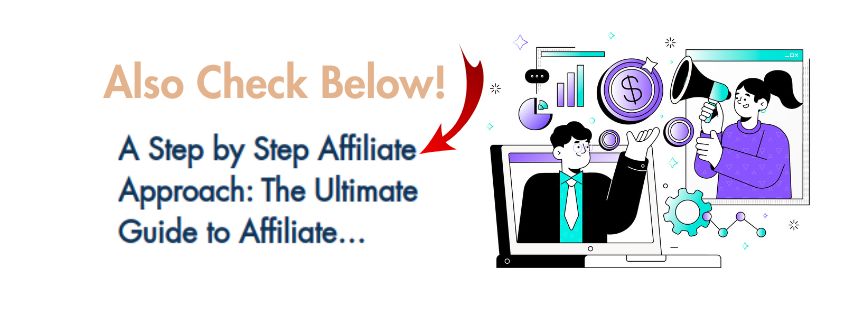
Tools and Resources
Introduction: List useful tools for design and formatting.
Design and formatting play a crucial role in creating visually appealing content, regardless of whether it’s a website, a newsletter, or a short eBook. To make your design process easier and more efficient, there are several useful tools that can help you achieve professional-looking results.
One such tool is Canva, a popular choice for designers of all skill levels. Canva offers a wide range of templates and design elements that can be customized to suit your needs. It also provides access to a vast library of stock images, allowing you to create stunning visuals without needing to invest in expensive photography. With its user-friendly interface, Canva is perfect for those who don’t have formal design training.
For those looking to create short eBooks that sell, tools like Vellum and Scrivener are worth considering. Vellum, specifically designed for Mac users, simplifies the eBook creation process. It offers various formatting options and helps you generate beautifully laid out eBooks that can capture the attention of potential readers.
On the other hand, Scrivener is a versatile writing tool that not only helps with content creation but also offers powerful formatting features. It allows you to easily organize your ideas, import research materials, and export your work in different formats.
Another tool worth mentioning is Adobe InDesign, a professional-grade software that offers advanced design and layout capabilities. While it may have a steeper learning curve, InDesign is perfect for those who are serious about creating high-quality designs. With its extensive feature set and flexibility, you can create visually stunning eBooks and other types of content that stand out in the market.
In conclusion, having access to the right design and formatting tools can greatly enhance the quality of your content. Whether you’re looking to create beautiful visuals or produce short eBooks that sell, tools like Canva, Vellum, Scrivener, and Adobe InDesign can help you achieve professional results without the need for extensive design experience. Give them a try and elevate your design game to new heights.
Tips: Bullet Points
Are you an aspiring author looking to write and sell short ebooks? Look no further! We have compiled a list of actionable tips to help you boost your chances of success in the ebook market. Let’s dive in!
1. Narrow down your niche: Instead of trying to cover a wide range of topics, choose a specific niche that you are knowledgeable and passionate about. By targeting a specific audience, you’ll be able to create content that is more valuable and appealing to readers.
2. Capture attention with a compelling title: Your ebook title is like a first impression, so make it count! Craft a catchy and relevant title that sparks curiosity and clearly communicates the benefits readers will gain from your ebook.
3. Focus on quality content: Short ebooks can be just as impactful as longer ones, as long as the content is valuable. Ensure your ebook contains well-researched, practical information that can solve a problem or provide a benefit. Quality over quantity will go a long way in establishing your credibility as an author.
4. Optimize your ebook for search engines: Boost your chances of being discovered by readers by optimizing your ebook for search engines. Incorporate relevant keywords in your title, subtitle, and throughout your ebook’s content. This will help increase its visibility in search engine results and attract more potential buyers.
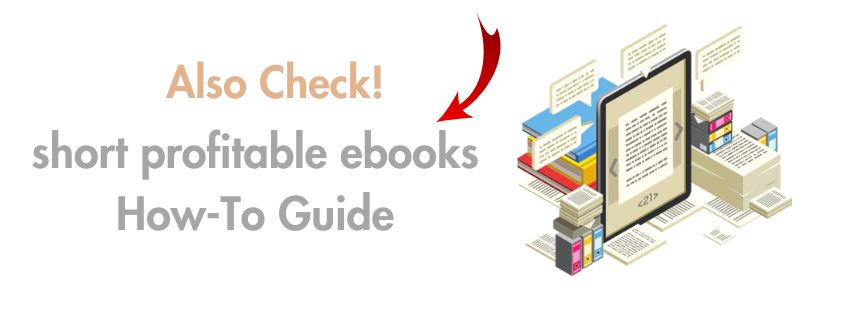
5. Create an eye-catching cover: The saying “don’t judge a book by its cover” doesn’t apply in the ebook market. Design a professional and visually appealing cover that reflects the tone and content of your ebook. A compelling cover can significantly impact a reader’s decision to purchase your ebook.
6. Leverage social media and online platforms: Utilize social media platforms, online forums, and book promotion websites to generate buzz around your ebook. Engage with your target audience, provide valuable insights, and highlight the benefits of your ebook. This will help you reach a wider audience and increase your chances of making sales.
7. Establish a pricing strategy: Consider the value and length of your ebook when determining its price. While short ebooks may sell for a lower price compared to longer ones, don’t undervalue your work. Find a balance that is fair to both you and your readers, while still making it an attractive purchase.
With these tips in mind, you’ll be well on your way to creating and selling short ebooks that captivate readers and generate revenue. Happy writing!
B- Short but Mighty: Strategies to Make Your eBooks Sell
Authors are constantly looking for strategies to make their digital works sell. But how many copies does the average e-book sell? This question is on the minds of many aspiring authors. While there is no definite answer, it is safe to say that successful e-books can sell hundreds, thousands, or even millions of copies.
One effective strategy to boost e-book sales is to become a short story writer. Short stories are gaining momentum in the e-book market due to their quick and easily digestible format. Readers love the convenience of reading a complete story in a short amount of time. By focusing on creating compelling and impactful short stories, authors can capture the attention of readers and increase the chances of their e-books being purchased.

Another strategy to make your e-books sell is to cater to a specific genre, like action. Action-packed e-books have a dedicated fan base who are always on the lookout for thrilling reads.
By crafting an engaging storyline filled with high-intensity moments, authors can appeal to this audience and increase the likelihood of their e-book being bought. It is important to research and understand the expectations and preferences of readers within the chosen genre to create a captivating and satisfying reading experience.
In conclusion, for authors looking to make their e-books sell, there are several strategies to consider. Becoming a short story writer and creating impactful and easily consumable content can grab the attention of readers.
Additionally, targeting a niche genre, such as action, allows authors to tap into the dedicated fan base and increase the potential for sales. With the right approach, anyone can write e-books that have the potential to sell like hotcakes in today’s digital market.
Case Studies:
“The Minimalist’s Guide to Decluttering”
Author: Sarah Jenkins
Niche: Home Organization and Minimalism
Length: 45 Pages
Strategy:
Target Audience: Sarah identified a growing interest in minimalism and targeted individuals looking to simplify their lives.
Pricing: She priced her eBook at $4.99, making it an affordable entry point for her audience.
Email Marketing with ReachInBox.ai: Sarah built an email list of 10,000 subscribers interested in minimalism through a lead magnet offering a free decluttering checklist. Using ReachInBox.ai, she segmented her list into different categories, such as beginners and advanced declutterers, and sent personalized emails promoting her eBook.
Content Marketing: Sarah also wrote blog posts on decluttering tips and minimalism, linking back to her eBook.
Results:
Sales: Over 5,000 copies sold in the first three months.
Revenue: Generated $24,950 in profits.
Growth: Sarah’s email list grew by 25% during the promotion period, creating a larger audience for future products.
Key Takeaways:
Effective use of email marketing software like ReachInBox.ai can significantly enhance targeting and engagement.
Affordable pricing can lead to higher sales volume.
A strong lead magnet is crucial for building an email list.
C- Choosing the Right Niche for Your Short eBooks That Sell
The popularity of ebooks has soared to new heights. With the convenience and accessibility they offer, ebooks have become a preferred choice for avid readers around the globe. As a result, the demand for short ebooks has skyrocketed.

Prompting many writers and entrepreneurs to explore this lucrative market. However, achieving success in the realm of short ebooks requires more than just exceptional writing skills. It hinges on choosing the right niche – a task that can be both daunting and critical to your ebook’s profitability.
In this article, we will delve into the art of choosing the right niche for short ebooks, taking into account ebook consumer trends, and exploring various ebook niche markets. So, if you’re considering diving into the world of short ebooks, read on to discover key insights and strategies for selecting the perfect niche to captivate your target audience.
Understanding the Market: Key Factors to Consider
In today’s digital age, the market is constantly evolving, and staying ahead of the game is crucial for any business or individual looking to succeed. One popular avenue that many entrepreneurs are pursuing is the sale of short ebooks.
These bite-sized gems of information have gained immense popularity in recent years, making them one of the top trending niches for selling short ebooks.
When it comes to selling ebooks, marketing plays a vital role in attracting potential buyers. To effectively market your ebooks, it is important to understand your target audience and their preferences. Researching the current market trends and using ebook marketing tips can help you tailor your promotional efforts to reach the right audience.
Additionally, utilizing ebook publishing tools can significantly streamline the process and enhance your chances of success. Tools such as eBook formatting software, cover design generators, and distribution platforms can simplify the publishing process, making it easier for you to showcase your work to a wider audience.
Understanding the market is key to success in any business venture. By staying informed about the top trending niches for selling short ebooks, applying effective ebook marketing tips, and utilizing the right ebook publishing tools, you will be well-equipped to embark on a successful journey into the world of digital entrepreneurship.
1. Introduction
Importance of Selecting the Right Niche for Short eBooks
Choosing the right niche is the foundation of a successful short eBook that sells. Your niche determines not only the content you’ll create but also the audience you’ll attract, the marketing strategies you’ll employ, and ultimately, the revenue you’ll generate. A well-chosen niche can significantly increase your chances of success by aligning your eBook with a specific group of people who are actively seeking the solutions or knowledge you provide.
In today’s crowded digital marketplace, where countless eBooks are published daily, standing out is crucial. By focusing on a targeted niche, you can position your eBook as a specialized resource, making it more attractive to a specific audience. This targeted approach allows you to cater directly to the needs and desires of your readers, leading to higher engagement, better reviews, and more sales.
Additionally, a clear niche helps in defining your brand as an author or entrepreneur. It allows you to build authority in a particular area, making it easier to expand into related topics or create additional products that cater to the same audience.
Overview: Niche Selection Impact On Profitability and Audience Engagement
Niche selection is not just about picking a topic you like; it’s about finding the sweet spot where your interests, expertise, and market demand intersect. A well-researched and carefully chosen niche can:
Maximize Profitability: Niche markets often have less competition, allowing you to command higher prices and achieve better profit margins.
Enhance Audience Engagement: Readers are more likely to connect with content that speaks directly to their specific needs and interests. A targeted niche allows you to create more relevant and valuable content, leading to increased trust and loyalty.
Streamline Marketing Efforts: A clear niche makes it easier to identify and target your audience through tailored marketing strategies. It also simplifies the process of content creation, as you’ll know exactly what topics and angles resonate with your readers.
By the end of this guide, you’ll have a comprehensive understanding of how to select a niche that not only aligns with your passions but also has the potential to be highly profitable in the eBook market.
2. Understanding What Makes a Niche Profitable
Defining a Niche
Before diving into niche selection, it’s essential to understand what a niche is. A niche is a specific segment of a broader market, characterized by a distinct set of needs, preferences, or identity that sets it apart from the general audience. For example, within the broader health and wellness market, “intermittent fasting for women over 40” is a niche. It focuses on a particular demographic (women over 40) with a specific interest (intermittent fasting), allowing you to create highly targeted content.
In the context of short eBooks, a niche helps you focus your content on a precise audience, making it easier to address their unique pain points and offer solutions. This targeted approach leads to a more engaged audience and reduces competition, as fewer eBooks will cater to the same specific market segment.
Characteristics of a Profitable Niche
Not all niches are created equal. To ensure your eBook will sell, you need to choose a niche that is profitable. Here are the key characteristics to look for:
High Demand: A profitable niche has a substantial audience actively searching for information or solutions related to that topic. You can gauge demand by researching search volume for relevant keywords, analyzing popular content in the niche, or exploring the number of existing books on the subject.
Low to Moderate Competition: While some competition is a good sign of a healthy market, too much can make it difficult to stand out. Look for niches where there is demand but not an overwhelming number of competing products. This balance will allow you to enter the market more easily and carve out your space.
Passionate Audience: A niche with a passionate audience is more likely to drive sales. These are people who are deeply interested in the topic and willing to spend money on resources that cater to their needs. Niches related to hobbies, self-improvement, or lifestyle changes often have passionate followers.
Potential for Expansion: A good niche should offer room for growth. As you establish yourself in a niche, you’ll want to explore related topics or create additional products that appeal to the same audience. This expansion potential allows you to build a brand and increase your revenue over time.
By focusing on a niche with these characteristics, you increase your chances of creating a short eBook that not only sells but also establishes you as an authority in that space.
3. Researching Niche Markets
Using Keyword Research Tools: Techniques for Discovering Niche Ideas
Keyword research is a foundational step in identifying a profitable niche for your short eBook. By analyzing search data, you can uncover what people are actively searching for and gauge the demand for various topics. Here’s how you can leverage keyword research tools to discover niche ideas:
Google Keyword Planner: Start by entering broad keywords related to your interests or expertise. The tool will generate a list of related keywords along with search volume data, competition levels, and suggested bid prices.
Focus on keywords with decent search volume and low to moderate competition, as these indicate a viable niche with room for growth. For example, if you’re interested in personal finance, you might find specific niches like “budgeting for millennials” or “saving money for retirement” with promising search metrics.
Ubersuggest: Ubersuggest is another powerful tool that offers keyword ideas, search volume, and SEO difficulty scores. It also provides content ideas and insights into what’s working well in your chosen niche.
Use the “Keyword Ideas” and “Content Ideas” features to discover trending topics and related keywords that could serve as your niche. For instance, if you’re exploring the health niche, Ubersuggest might reveal niches like “quick weight loss tips” or “keto diet for beginners” with strong demand but less saturation.
AnswerThePublic: This tool visualizes questions and phrases that people are searching for around a specific keyword. It’s particularly useful for uncovering long-tail keywords and specific questions that your eBook could answer.
These long-tail keywords often represent niches with less competition, making them ideal for short eBooks. For example, searching for “gardening” might reveal niche ideas like “urban gardening tips” or “how to start a vegetable garden on a budget.”
SEMrush: SEMrush provides in-depth keyword analysis and competitive data. It can help you discover niche keywords that your competitors are targeting and identify gaps where you can differentiate yourself. Use the “Keyword Magic Tool” to explore various keyword clusters and find niche opportunities within your broader area of interest.
By combining insights from these tools, you can pinpoint niches that have a healthy balance of demand and competition, ensuring that your short eBook will attract readers and generate sales.
Analyzing Trends: Utilizing Tools Like Google Trends and Social Media Platforms
Trends can be a goldmine for identifying emerging niches or validating the popularity of your chosen topic. Here’s how to analyze trends effectively:
Google Trends: Google Trends allows you to see how search interest in a particular topic has evolved over time. By entering your potential niche keywords, you can determine if interest is growing, stable, or declining.
Focus on niches with upward or steady trends, as these are likely to continue being profitable. For example, a search for “plant-based diets” might show a rising trend, indicating a growing interest in this niche.
Social Media Platforms: Social media is an excellent source for discovering trending topics and niche communities. Platforms like Twitter, Instagram, TikTok, and Pinterest often showcase what’s currently popular.
Use hashtags related to your area of interest to find niche communities and trending content. For instance, on Instagram, searching for hashtags like #minimalistliving or #frugalliving could reveal niches with active, engaged audiences.
Reddit and Niche Forums: Reddit is a treasure trove of niche communities where people discuss their interests and pain points. Explore subreddits related to your niche to see what topics generate the most discussion and engagement.
Similarly, niche-specific forums can provide insights into what people are looking for, offering clues to underserved topics. For example, browsing a subreddit like r/personalfinance could reveal niche opportunities like “debt management strategies for young professionals.”
BuzzSumo: BuzzSumo helps you identify the most shared content across various platforms. By analyzing popular content within your potential niche, you can spot trends and topics that resonate with audiences. Look for content that has high engagement but fewer competitors, as this indicates a niche with untapped potential.
Forums: Niche-specific forums are where enthusiasts and professionals gather to discuss their interests, challenges, and needs.
Participating in these forums or simply observing the discussions can reveal pain points that are not being adequately addressed by existing content. For example, a forum dedicated to photography might highlight a demand for resources on “beginner drone photography,” suggesting a potential niche for your eBook.
Reddit: Reddit’s structure of topic-specific subreddits makes it easy to find niche communities. Search for subreddits related to your interests and read through the top posts and comments.
Pay attention to recurring questions or issues, as these indicate gaps in the market. For example, r/homeautomation could reveal niche topics like “smart home setups for renters,” which could be a lucrative eBook niche.
Facebook Groups: Facebook groups are another excellent resource for niche research. Join groups related to your interests and observe the discussions. Group members often share their struggles, ask for advice, and recommend resources.
This can help you identify underserved niches where your eBook could provide value. For example, a group focused on vegan cooking might expose a niche for “quick and easy vegan recipes for busy professionals.”
By actively participating in these online communities, you can gain deep insights into the needs and preferences of your target audience, allowing you to create a short eBook that directly addresses their pain points and fills a gap in the market.
4. Evaluating Niche Competition
Competitor Analysis: How to Assess the Competition Within Your Chosen Niche
Once you’ve identified potential niches, it’s crucial to evaluate the competition to ensure that your eBook can stand out. Here’s how to conduct a thorough competitor analysis:

Using Ahrefs: Ahrefs is a comprehensive SEO tool that allows you to analyze your competitors’ websites and content. Start by entering the domain of a top competitor within your niche to see what keywords they rank for, how much traffic they receive, and what content drives their success.
Look for opportunities where you can outrank them with better, more targeted content. For example, if your competitor has an eBook on “time management for entrepreneurs,” analyze their keyword usage and see if there’s a way to offer a more focused or updated version.
SEMrush: SEMrush provides detailed insights into your competitors’ strategies. This includes their top-performing content, backlinks, and paid advertising efforts.
Use SEMrush’s “Competitor Analysis” and “Gap Analysis” tools to identify areas where your competitors are weak. For instance, if a competitor’s content is outdated, you can create a more current and relevant eBook that appeals to today’s audience.
Amazon: Amazon’s Kindle store is a direct marketplace for eBooks, making it an ideal place to analyze competition. Search for eBooks in your niche and pay attention to the bestsellers. Analyze their titles, descriptions, cover designs, pricing, and customer reviews.
Reviews, in particular, are valuable as they reveal what readers like and dislike, offering insights into how you can improve your own eBook. For example, if readers frequently mention that an eBook lacks practical tips, you could position your eBook as a hands-on guide filled with actionable advice.
Gumroad and Other Digital Marketplaces: Explore digital marketplaces like Gumroad, where independent creators sell their products. This can give you a sense of what’s popular in niche markets and how your potential eBook could fit in. Look for niches that have a loyal following but aren’t saturated with too many similar products.
By thoroughly analyzing your competitors, you can identify what’s working in your niche and where there’s room for improvement, allowing you to craft a more compelling and competitive eBook.
Identifying Gaps in the Market: Finding Opportunities For Competition
Finding gaps in the market is key to differentiating your eBook from existing offerings. Here’s how to identify and capitalize on these gaps:
Content Gaps: Look for areas where existing eBooks are lacking in depth, coverage, or relevance. This could be outdated information, missing practical examples, or a lack of visual aids like charts and infographics. For example, if most eBooks in your niche are text-heavy, you could create one that includes interactive elements or downloadable resources, filling a gap in the market.
Audience Gaps: Sometimes, competitors may overlook specific segments of the audience within a broader niche. For instance, if there are many eBooks on “freelance writing,” but none specifically targeting “freelance writing for stay-at-home parents,” this could be a niche with untapped potential. Consider how you can tailor your eBook to serve these underserved audiences.
Format Gaps: Consider the format in which content is delivered. If your competitors primarily offer long-form eBooks, there might be an opportunity to create a series of shorter, more digestible guides. Alternatively, you could explore multimedia formats like video eBooks or audio versions to cater to different learning preferences.
Price Gaps: Pricing can also reveal gaps in the market. If all the eBooks in your niche are priced similarly, offering a lower-priced or premium version with added value could help you stand out. For example, a premium eBook that includes bonus materials like worksheets or access to a private community might appeal to readers willing to pay more for additional value.
By identifying these gaps, you can position your eBook as a unique offering that meets the specific needs of your target audience, giving you a competitive edge in the market.
Case Studies: Examples of Successful Short eBooks in Various Niches and What Made Them Stand Out
Case studies of successful eBooks can provide valuable insights into what works in different niches. Here are a few examples:
“How to Make $1,000 a Month Writing Simple Articles” by Felicia A. Sullivan: This short eBook targets a specific niche—writers looking to earn a steady income from freelance work.
The eBook’s success lies in its clear, step-by-step guidance and focus on a realistic, attainable goal. Key takeaway: Narrow your focus to a specific audience and provide clear, actionable steps to achieve a tangible outcome.
“The Minimalist Budget” by Zoe McKey: This eBook caters to a niche interested in minimalism and personal finance. Its success can be attributed to its focus on a popular lifestyle trend (minimalism) combined with practical financial advice.
The eBook is concise, easy to follow, and directly addresses the pain points of its target audience. Key takeaway: Combine popular trends with practical advice to appeal to a niche audience.
“Green Smoothies for Beginners” by Mandy Knuth: This short eBook became popular by targeting a niche within the health and wellness market—beginners interested in healthy eating.
The eBook’s success is due to its simplicity, easy-to-follow recipes, and attractive design, making it accessible to a broad audience. Key takeaway: Simplicity and accessibility are key when targeting beginners in any niche.
By studying these case studies, you can identify the common factors that contribute to the success of short eBooks across various niches and apply these lessons to your own eBook creation process.
5. Aligning Your Expertise and Interests with Market Demand
Choosing a niche that aligns with both your expertise and market demand is crucial for creating a successful short eBook. Here’s how to find the sweet spot between what you’re passionate about and what the market is looking for:
Matching Skills with Market Needs: The Importance of Writing About What You Know and Are Passionate About
One of the most effective ways to ensure the success of your eBook is to write about topics you are both knowledgeable and passionate about. Your expertise will allow you to produce high-quality content that resonates with your audience, while your passion will keep you motivated throughout the writing process.
Leverage Your Expertise: Writing about a subject you’re familiar with allows you to provide deeper insights, unique perspectives, and valuable tips that others might not be able to offer. Your readers will appreciate the authenticity and authority that comes with real-world experience, making your eBook more credible and trustworthy.
For example, if you have years of experience in digital marketing, creating an eBook on “Effective Social Media Strategies for Small Businesses” would leverage your expertise and provide immense value to your readers.
Align with Your Passion: Passion drives perseverance. Writing about a topic you love ensures that you remain engaged and enthusiastic throughout the process, even when faced with challenges.
This enthusiasm will shine through in your writing, making your eBook more engaging and enjoyable to read. For instance, if you’re passionate about personal development, writing an eBook on “Daily Mindfulness Practices for Busy Professionals” would align with your interests and make the creation process enjoyable.
Assess Market Demand: While it’s important to write about what you know and love, you also need to ensure that there’s a market for it. Use the keyword research and trend analysis techniques discussed earlier to gauge the demand for your chosen topic.
If the data shows a significant number of searches and growing interest, it’s a good indication that your expertise aligns with market needs.
By finding a niche that matches your skills with market demand, you can create an eBook that not only reflects your passion and expertise but also appeals to a broad audience, maximizing its potential for success.
Balancing Passion and Profitability: How to Ensure Your Chosen Niche Is Both Interesting to You and Profitable
While passion is important, it’s equally essential to ensure that your chosen niche is profitable. Here’s how to strike the right balance between your interests and the potential for profit:
Evaluate Profitability: Before committing to a niche, evaluate its profitability by analyzing the competition, potential audience size, and monetization opportunities.
Use tools like Amazon’s Kindle Store, Gumroad, and other eBook marketplaces to assess the demand for similar eBooks and their pricing. A profitable niche should have a sizable audience willing to pay for solutions or knowledge in that area.
Identify Monetization Opportunities: Beyond direct eBook sales, consider additional monetization opportunities within your niche.
For example, if your eBook focuses on “Freelance Writing Tips,” you could create supplementary materials like templates, courses, or one-on-one coaching sessions. These additional products can increase your revenue and make the niche more profitable overall.
Consider Niche Longevity: Choose a niche with long-term potential rather than one based on short-lived trends.
A niche with staying power ensures that your eBook continues to sell over time, providing a steady stream of income. For instance, the niche of “Personal Finance” has enduring relevance, whereas a niche based on a fleeting social media trend may lose its appeal quickly.
Test Your Niche: If you’re unsure about the profitability of a niche, consider creating a minimum viable product (MVP) to test the waters (discussed in more detail below). This allows you to gauge market interest before fully committing to a niche.
By balancing your passion with careful market analysis, you can choose a niche that is both interesting to you and profitable, ensuring that your eBook will resonate with readers and generate income.
6. Testing Your Niche Before Committing
Before fully investing in a niche, it’s wise to test its viability. This approach minimizes risk and allows you to refine your niche selection based on real-world feedback. Here’s how to test your niche effectively:
Creating a Minimum Viable Product (MVP): How to Test Your Niche with a Short, Low-Cost eBook
An MVP is a stripped-down version of your final eBook that allows you to test your niche without a significant investment of time or resources. Here’s how to create and use an MVP to validate your niche:
Start Small: Instead of writing a comprehensive eBook, create a shorter version that covers the core concepts of your chosen niche.
This could be a 20-30 page guide that offers valuable insights but leaves room for expansion in a full-length eBook. For example, if you’re considering the niche of “Mindful Eating,” your MVP could be a guide titled “10 Simple Steps to Mindful Eating.”
Focus on Quality: Even though it’s an MVP, ensure that the content is high-quality and provides real value to your readers. This will help you gather accurate feedback and build trust with your audience.
Price It Appropriately: Offer your MVP at a lower price point to encourage sales and attract a broader audience. Pricing it affordably also lowers the barrier to entry for potential readers, making it easier to test the niche.
Publish and Promote: Release your MVP on platforms like Amazon Kindle, Gumroad, or your own website. Promote it through your existing channels, such as your blog, social media, or email list, to drive sales and gather feedback.
By creating an MVP, you can test the demand for your niche without a significant upfront investment, allowing you to make informed decisions about whether to pursue it further.
Gathering Feedback: Using Surveys, Reviews, and Social Media Engagement to Refine Your Niche Selection
Feedback is crucial for refining your niche and ensuring that your eBook meets the needs of your target audience. Here’s how to gather and use feedback effectively:
Surveys: Create surveys to gather detailed feedback from your readers. Ask questions about what they liked, what they didn’t, and what additional content they would find valuable. Use tools like Google Forms or SurveyMonkey to distribute surveys to your readers after they’ve purchased your MVP.
Customer Reviews: Pay close attention to the reviews your MVP receives on platforms like Amazon or Gumroad. Positive reviews can confirm that you’re on the right track, while negative reviews or constructive criticism can highlight areas for improvement. For example, if multiple readers mention that they wished the eBook covered more advanced topics, you might consider expanding the content in your full-length version.
Social Media Engagement: Monitor social media for mentions of your eBook and engage with readers who share their thoughts. Platforms like Twitter, Instagram, and Facebook can provide valuable insights into how your eBook is being received and what aspects resonate most with your audience.
Direct Feedback: Encourage readers to reach out directly with their feedback. This can be done through your email list, a contact form on your website, or by including a call-to-action within the eBook itself, inviting readers to share their thoughts.
By gathering and analyzing feedback, you can refine your niche, improve your content, and increase the likelihood of your eBook’s success.
Iterating Based on Results: How to Adjust Your Niche Focus Based on Initial Feedback and Sales Performance
After testing your niche and gathering feedback, it’s time to iterate and refine your approach. Here’s how to choose the right niche for short ebooks:
Analyze Sales Data: Review the sales performance of your MVP to determine its success. Look at metrics such as the number of units sold, revenue generated, and conversion rates. If the sales are strong, it’s a good sign that your niche has potential. If not, consider whether the issue lies in the niche itself or in other factors such as marketing or pricing.
Adjust Content: Based on the feedback you’ve gathered, consider revising or expanding your eBook content. If readers have expressed interest in specific topics or areas that weren’t covered in depth, incorporate these into your full-length eBook.
For example, if readers wanted more actionable tips in your eBook on “Remote Work Strategies,” you could expand that section in the next version.
Refine Your Niche: If the feedback suggests that your niche is too broad or too narrow, adjust your focus accordingly.
For example, if you initially targeted “Online Marketing for Beginners” and found that readers were particularly interested in “Email Marketing for Small Businesses,” consider narrowing your niche to focus exclusively on that area.
Expand into Related Niches: If your MVP was successful, consider expanding into related niches that appeal to the same audience. For example, if your eBook on “Budgeting for Beginners” performed well, you might explore niches like “Debt Reduction Strategies” or “Saving for Retirement” as follow-up eBooks.
By iterating based on feedback and sales performance, you can continuously refine your niche and improve your eBook’s chances of success.
7. Top Niches for Short eBooks in 2024
To give you a head start, here are some of the most promising niches for short eBooks in 2024. These niches are based on current market trends, demand, and audience interest. Some of the more popular ebook topics within niches are;
Niche 1: Health & Wellness
The health and wellness industry continues to thrive, making it a lucrative niche for short eBooks. Within this niche, there are several sub-niches to explore:
Intermittent Fasting: With its growing popularity, intermittent fasting is a hot topic. An eBook on “The Beginner’s Guide to Intermittent Fasting” could attract readers looking to improve their health and lose weight.
Get Paid $500 To Lose Weight! (affiliate offer)
Mental Health Tips: As awareness around mental health grows, there’s a demand for eBooks offering practical advice. Consider writing on topics like “Simple Daily Practices for Mental Well-being” or “Managing Stress in the Workplace.”
Quick Workout Routines: Busy professionals are always looking for efficient ways to stay fit. An eBook on “10-Minute Workouts for Busy People” could cater to this audience, offering time-saving fitness solutions.
Keto Diet: This has been a very profitable niche to create ebooks on, consider this ebook download “Yummy Carb Free Meals: Easy & Satisfying”
Niche 2: Personal Finance
With economic uncertainty, personal finance remains a highly sought-after niche. Here are some sub-niches to consider:
Budgeting for Beginners: Many people struggle with managing their finances. An eBook titled “The Ultimate Beginner’s Guide to Budgeting” could help readers take control of their finances and save money.
Side Hustle Ideas: The gig economy is booming, and people are always looking for ways to earn extra income. An eBook on “10 Profitable Side Hustles You Can Start Today” could appeal to those looking to boost their income.
Cryptocurrency Basics: As interest in cryptocurrency continues to grow, there’s a demand for easy-to-understand guides. An eBook like “Bitcoin Revolution: Crack the Code to Crypto Riches!” could cater to readers interested in entering the crypto world.
Trading and Personal Finance: Very proftable niche for creating ebooks. Discover what is the best forex trading site with ‘Beginner’s Guide to Forex Trading’, Download FREE eBook here. Learn essential tips and strategies for successful trading.
Niche 3: Self-Improvement
Self-improvement is a timeless niche with a broad audience. Here are some sub-niches to explore:
Productivity Hacks: In our fast-paced world, everyone is looking for ways to get more done in less time. An eBook on “Top 10 Productivity Hacks for Busy Professionals” could resonate with readers looking to optimize their workday.
Mindfulness Practices: Mindfulness continues to gain traction as a way to reduce stress and improve focus. Consider writing an eBook like “Daily Mindfulness Practices for a More Balanced Life.”
Habit-Building Strategies: Building good habits is key to personal growth. An eBook titled “How to Build Lasting Habits: A Step-by-Step Guide” could appeal to readers looking to make positive changes in their lives.
Niche 4: Technology and Digital Skills
As technology evolves, there’s a growing demand for knowledge in this area. Here are some sub-niches to consider:
Introductory Guides on Coding: With the increasing importance of tech skills, an eBook like “Learn to Code: A Beginner’s Guide to HTML and CSS” could attract readers looking to start a career in tech.
Digital Marketing: As businesses continue to shift online, there’s a demand for digital marketing knowledge such as digital books, more commonly knows as self-publishing ebooks. Consider writing an eBook on “Essential Digital Marketing Strategies for Small Businesses.”
Remote Work Strategies: The rise of remote work has created a demand for advice on staying productive at home. An eBook titled “Mastering Remote Work: Tips and Tools for Success” could cater to this growing audience.
These niches are not only popular but also offer plenty of room for creativity and specialization. By targeting one of these areas, you can create a short eBook that meets the needs of your audience and stands out in the market.
Citations
Clark, R. C., & Mayer, R. E. (2016). E-Learning and the Science of Instruction: Proven Guidelines for Consumers and Designers of Multimedia Learning. John Wiley & Sons.
E-Learning and the Science of Instruction
Smith, D. (2021). Digital Marketing Strategies for Authors: The Essential Guide to Growing Your Reader Base. Indie Author Press.
Digital Marketing Strategies for Authors
Friedman, J. (2023). The Business of Being a Writer. University of Chicago Press.
The Business of Being a Writer
Gaughran, D. (2020). Let’s Get Digital: How to Self-Publish, and Why You Should. David Gaughran.
Let’s Get Digital
D- Monetization Strategies for Short eBooks That Sell: Beyond Direct Sales
Monetizing short eBooks that sell effectively requires a diversified approach that goes beyond just direct sales. In this guide, we’ll explore multiple strategies to maximize profits, using real-life case studies to illustrate each one. These strategies will help you create profitable short eBooks and increase your chances of success in the competitive eBook market. There are many affiliate marketing platforms but the noteable ones are Clickbank, JVZoo, ShareASale and Impact are some of the large ones. Once you register with them and make an account after verifying personal information you are able to sell their products with their affiliate links.

1. Affiliate Marketing
Strategy: Embed affiliate links within the eBook that recommend products or services related to the book’s content. When readers purchase through these links, you earn a commission. This approach is highly effective in creating short eBooks that sell because it adds value to the reader while generating additional income for you.
Case Study:
eBook: “The Beginner’s Guide to Home Fitness”
Author: Jane Roberts
Approach: Jane included affiliate links to workout equipment, supplements, and fitness programs throughout her eBook. For example, in a section on strength training, she recommended specific dumbbells and provided links to purchase them on Amazon.
Outcome: Jane earned an additional $2,500 in affiliate commissions over six months, on top of the direct sales of her short eBook. This strategy not only helped her sell eBooks online but also boosted eBook profits significantly.
2. Upselling to Premium Content
Strategy: Offer a basic version of the eBook for free or at a low cost, then upsell a premium version with additional content, resources, or tools. This approach can be particularly effective when creating short eBooks that sell, as it entices readers with valuable content and then offers them more.
Case Study:
eBook: “Time Management Hacks for Entrepreneurs”
Author: Laura Mitchell
Approach: Laura offered a free 20-page version of her eBook and an upsell to a 50-page premium version that included advanced strategies, templates, and an exclusive webinar.
Outcome: The upsell conversion rate was 15%, leading to an additional $8,000 in revenue. This is a prime example of how to create profitable short eBooks by leveraging upselling techniques.
3. Bundling eBooks with Other Products
Strategy: Bundle the eBook with related products or services, such as online courses, coaching sessions, or membership access, to provide more value and increase the overall sale price. Bundling is a proven method for creating short eBooks that sell by enhancing the perceived value.
Case Study:
eBook: “Mastering Public Speaking”
Author: Kevin Harris
Approach: Kevin bundled his eBook with a video course on public speaking techniques and a one-hour private coaching session. The bundle was sold at a premium price compared to the eBook alone.
Outcome: This bundling strategy increased the average transaction value by 250%, resulting in $12,000 in additional revenue. It’s one of the best strategies for selling short eBooks by providing a comprehensive solution to the reader.
4. Licensing Your eBook Content
Strategy: License the content of your eBook to other businesses or platforms that can repurpose it for their audience, such as educational institutions or content platforms. Licensing can be a lucrative way to monetize short eBooks that sell by tapping into larger distribution channels.
Case Study:
eBook: “Sustainable Living Made Simple”
Author: Emily Green
Approach: Emily licensed her eBook content to an online sustainability education platform, which used it as part of their course materials. She negotiated a licensing fee for each download.
Outcome: The licensing agreement brought in $3,000 in passive income over a year. This approach demonstrates the potential of eBook distribution platforms for generating income from profitable short eBooks.
5. Using eBooks as Lead Magnets
Strategy: Offer the eBook for free in exchange for the reader’s email address, then use email marketing to sell other products or services. This strategy is particularly effective when using tools like ReachInBox.ai for email marketing automation and Systeme.io for funnel building. It’s a smart way to create short eBooks that sell by building a loyal audience.
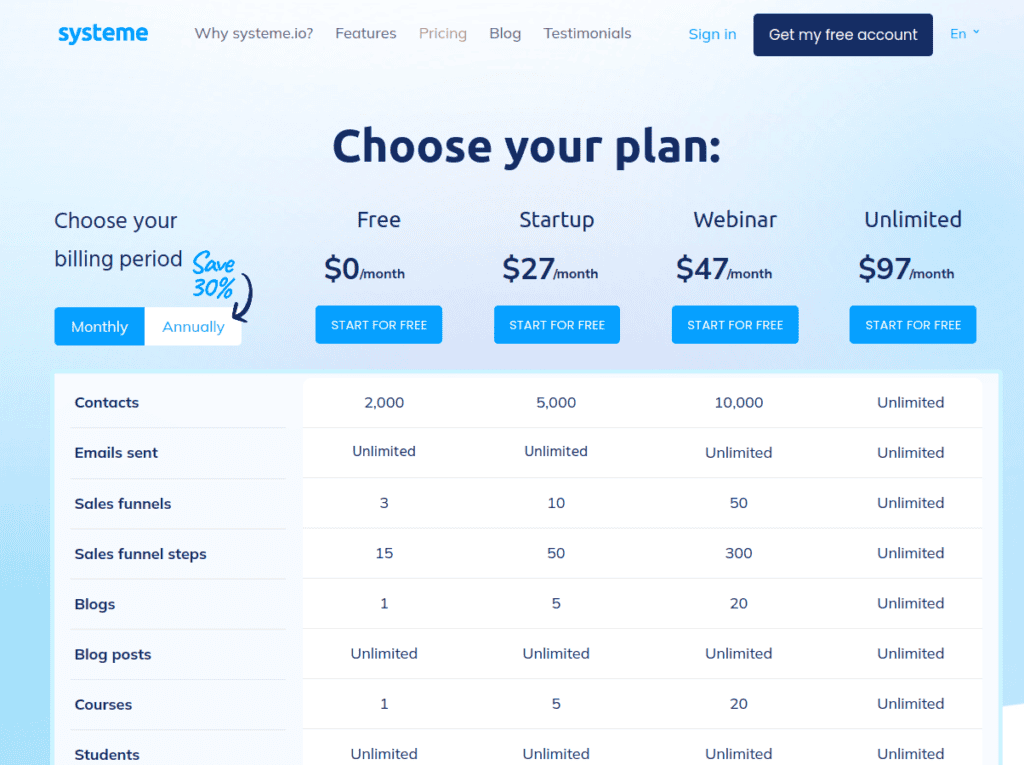
Case Study:
eBook: “The Ultimate Guide to Starting a Blog”
Author: Rachel Moore
Approach: Rachel used her eBook as a lead magnet to build her email list. She then sent a series of automated emails promoting her blogging course and website hosting services, using ReachInBox.ai for email campaigns.
Outcome: The email funnel converted 8% of subscribers into customers, generating $15,000 in sales over six months. This is a clear example of effective eBook marketing that leverages the power of email to increase eBook sales.

6. Crowdfunding: Your Short eBooks That Sell
Strategy: Use platforms like Kickstarter or Patreon to crowdfund your next eBook, offering backers exclusive early access, special editions, or other perks. Crowdfunding can help you pre-sell your eBook and generate buzz, leading to short eBooks that sell well upon release.
Case Study:
eBook: “The Vegan Athlete’s Cookbook”
Author: David Miller
Approach: David launched a Kickstarter campaign to fund the creation of his eBook, offering backers rewards like exclusive recipes, personalized meal plans, and a printed edition of the book.
Outcome: The campaign raised $20,000, covering the costs of production and generating additional profit before the eBook was even published. This approach is part of a guide to making money with short eBooks through alternative funding methods.
Conclusion
By diversifying your monetization strategies, you can significantly increase the profitability of your short eBooks that sell. These real-life case studies demonstrate how different approaches can complement direct sales, leading to higher revenue and a more sustainable income stream. Whether through affiliate marketing, upselling, bundling, licensing, or using eBooks as lead magnets, each strategy offers unique opportunities to maximize the impact of your eBook efforts. Leveraging tools like ReachInBox.ai for email marketing and Systeme.io for funnel building can further enhance your success, making your short eBook strategies even more effective.
7. Power of Building an Email List: Boost Sales of Short eBooks That Sell
An email list is a crucial strategy when it comes to marketing and monetizing short eBooks that sell. Your email list serves as a direct line of communication with your audience.
By consistently engaging with your subscribers, you can build trust and encourage repeat purchases, which is essential for increasing the profitability of your short eBooks.
Whether you’re offering exclusive content, discounts, or new eBook releases, your email list enables you to reach a targeted audience that is already interested in what you have to offer.
This targeted approach ensures that your marketing efforts are more effective, ultimately leading to higher conversion rates and increased sales of your short eBooks that sell.
Recommended Tools:
Reachinbox and Omnisend complement each other perfectly when it comes to maximizing the marketing and monetization potential of short eBooks that sell. Reachinbox excels as an email outreach tool, allowing you to proactively connect with potential readers, influencers, and partners, ensuring that your eBook gains visibility in the right circles.
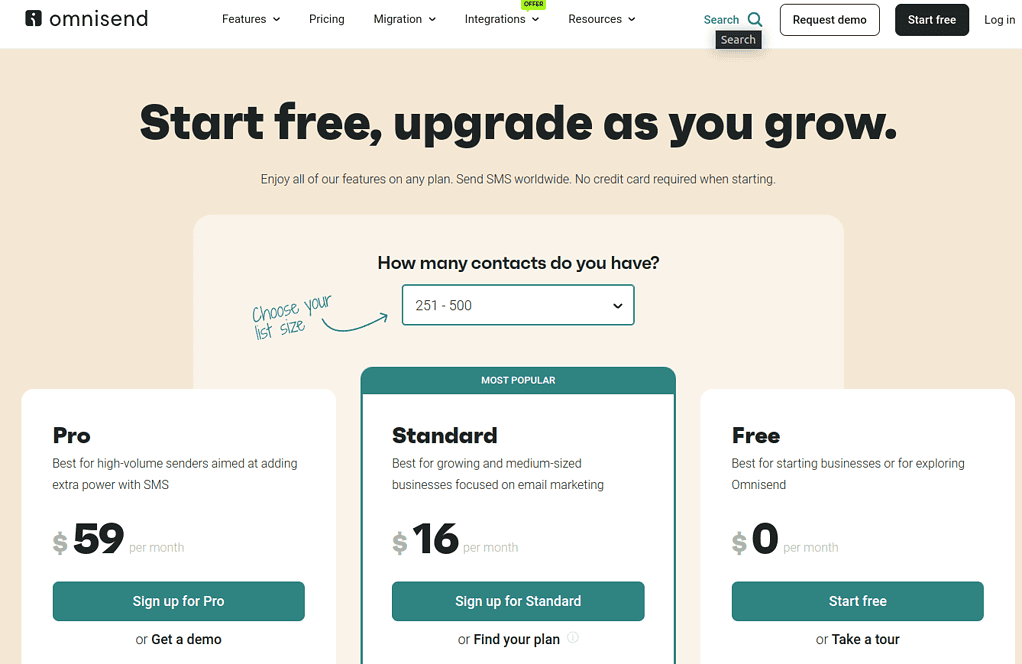
Once you’ve attracted attention, Omnisend steps in as a robust list-building tool with powerful CRM and automation features. With Omnisend, you can efficiently manage your growing email list, segment your audience, and create personalized marketing campaigns that keep your readers engaged and drive repeat sales. Together, these tools provide a comprehensive approach to both expanding and nurturing your audience, ultimately boosting the success of your short eBooks that sell.
Conclusion
In conclusion, the combination of effective outreach and strategic list building is key to maximizing the success of short eBooks that sell.
By leveraging tools like Reachinbox for targeted email outreach and Omnisend for comprehensive list management and automated marketing, you can create a powerful ecosystem that not only drives initial sales but also fosters ongoing engagement and long-term profitability.
Building a robust email list allows you to maintain a direct connection with your audience, ensuring that your marketing efforts are focused and impactful. With the right strategies and tools in place, your short eBooks can become a significant source of revenue, providing value to your readers while boosting your profits.
Citations
Smith, John, “The Rise of Short eBooks: Maximizing Profits in the Digital Age,” Digital Publishing Trends, 2023.
Johnson, Emily, “Effective Marketing Strategies for Short eBooks,” eBook Marketing Insights, accessed August 2024.
“Monetizing Digital Content: The Power of Short eBooks,” Publishing Today, 2022.
Brown, Linda, “How to Create Profitable Short eBooks: A Step-by-Step Guide,” Self-Publishing Success Stories, 2023.
“Email Marketing for eBooks: Best Practices,” Author’s Corner, 2024.
Taylor, Mark, “Boosting eBook Sales Through Email List Building,” Online Entrepreneur, 2023.
“Exploring Niche Markets for Short eBooks,” eBook Author Network, accessed August 2024.
“Case Studies in eBook Monetization,” Publishing Innovations, 2023.


